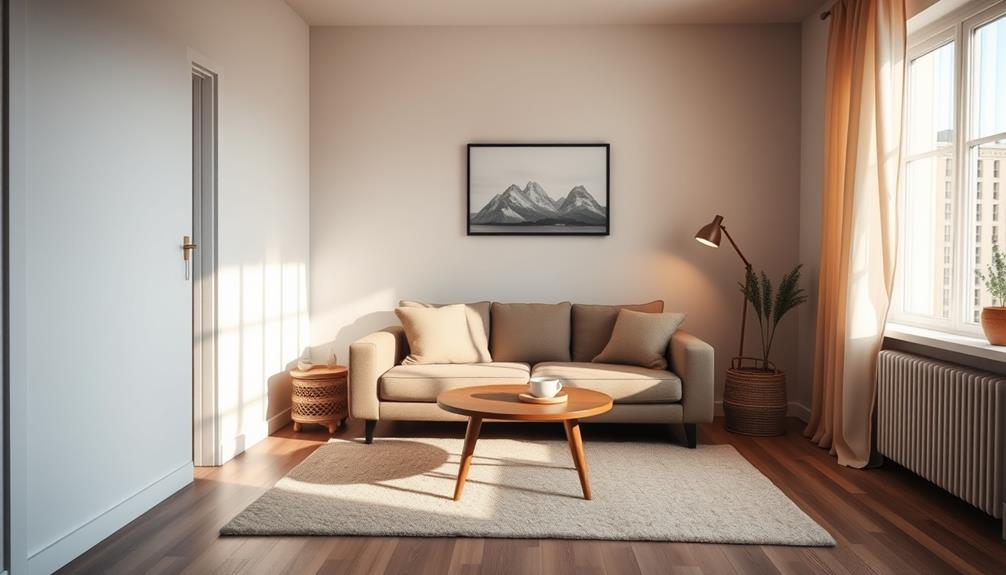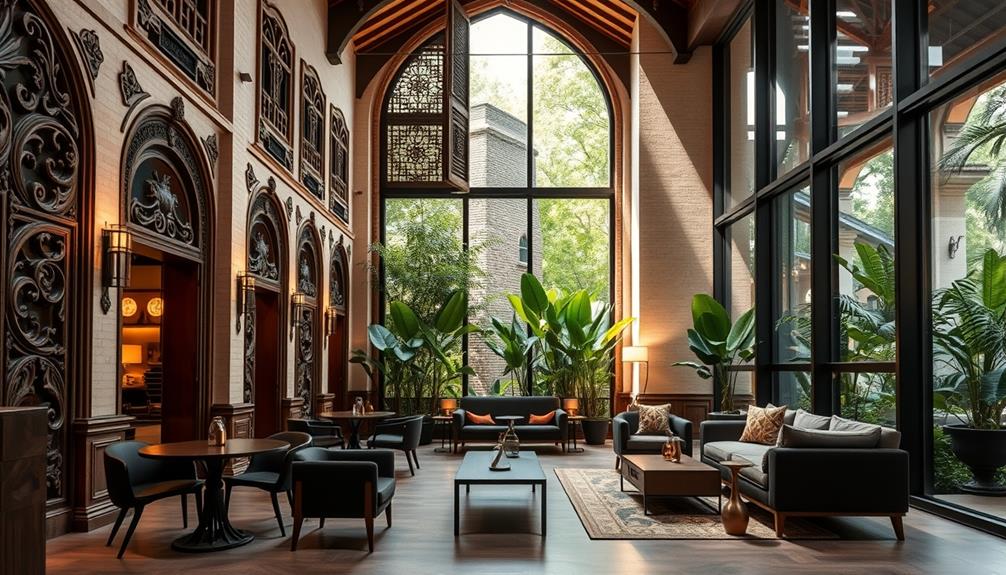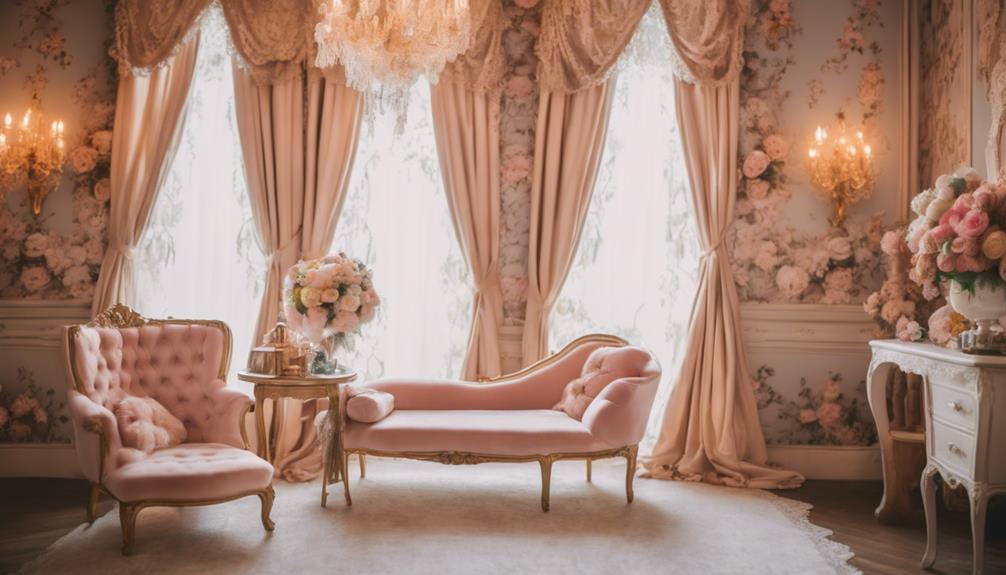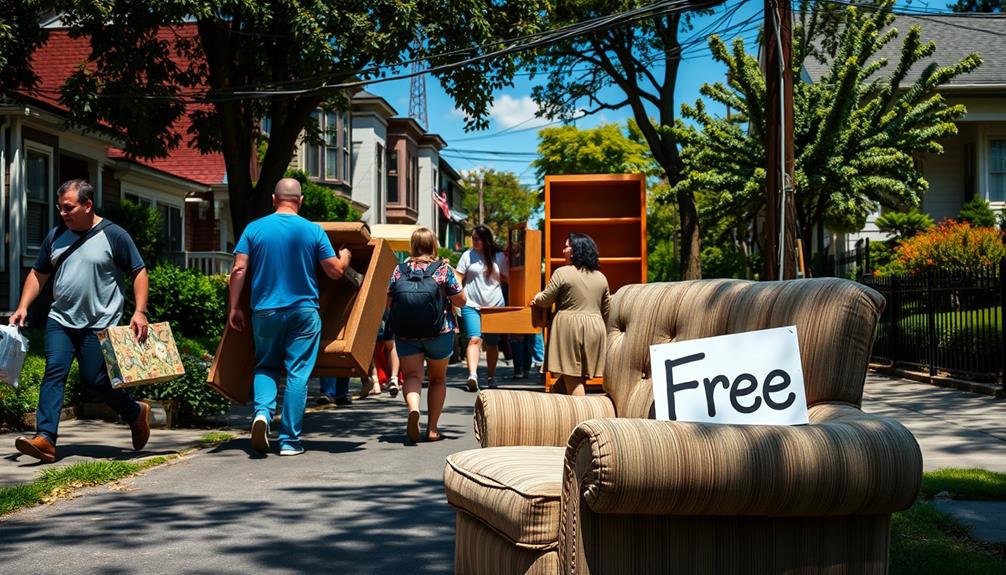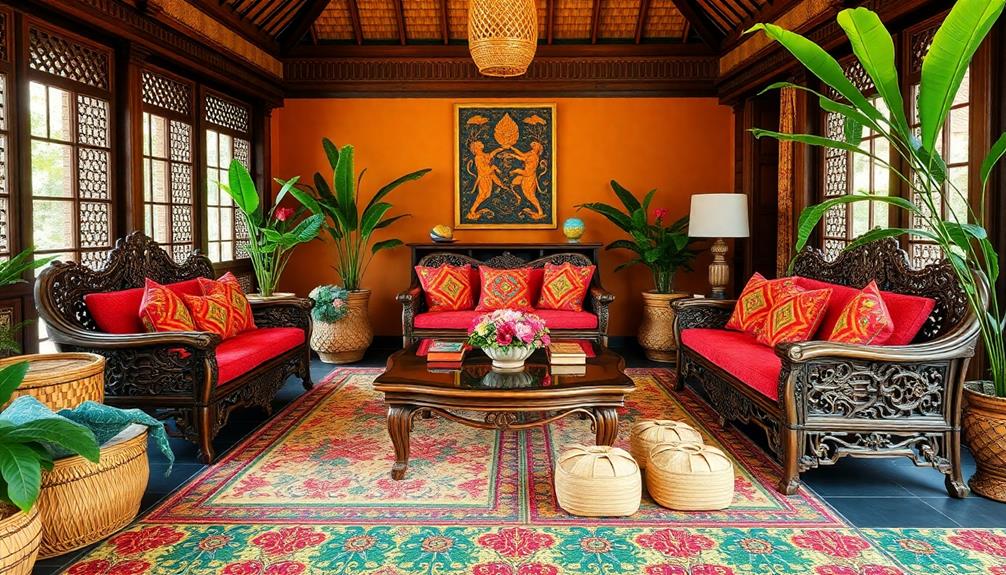When arranging your living room furniture in a small space, begin by identifying a central focal point, such as a TV or fireplace. Pull furniture away from the walls to create a cozy gathering spot. Choose multi-functional pieces, like ottomans with storage or a sofa bed, to maximize space. Use light colors on your walls and furnishings to enhance the feeling of openness and brightness. Install shelves to make use of vertical space and define different areas with area rugs. Lastly, place seating near windows to make use of natural light. Find more tips for making your small living area feel spacious and stylish. When optimizing the layout of your living room in a small space, consider using furniture that can be easily moved or folded away when not in use. Use mirrors to create the illusion of more space and think about using furniture with exposed legs to create a sense of openness. By following these guidelines, you can make the most of your small living room and create a stylish and functional space for you and your guests to enjoy.
Key Takeaways
- Identify a focal point and arrange seating to enhance conversation and functionality around it.
- Use light colors for walls and furniture to create a more spacious and airy feel.
- Opt for multi-functional furniture, like ottomans with storage or sofa beds, to maximize space.
- Create distinct zones with furniture placement and area rugs to define different functional areas.
- Utilize vertical space with wall-mounted shelves to keep the floor area open and organized.
Design Around a Focal Point
When arranging your small living room, how can you make the most of your space? Start by identifying a central focal point, like a fireplace or a television. This element will guide your furniture arrangements and create a natural gathering area.
Position your seating around this focal point to encourage conversation and enhance the room's functionality. Incorporating vintage furnishings can add character and warmth, aligning with the modern farmhouse decor trends that emphasize authenticity.
Consider arranging furniture at angles or in a circular layout. This not only improves viewing angles but also invites engagement, making your small living room feel more welcoming.
A coffee table placed in front of the seating area can ground the arrangement, providing a practical surface for drinks and decor while complementing your focal point.
To maintain an open feel, opt for light-colored or legged furniture. This choice enhances visibility of the floor space, which can make your room appear larger and highlight the focal point.
Optimize Furniture Placement
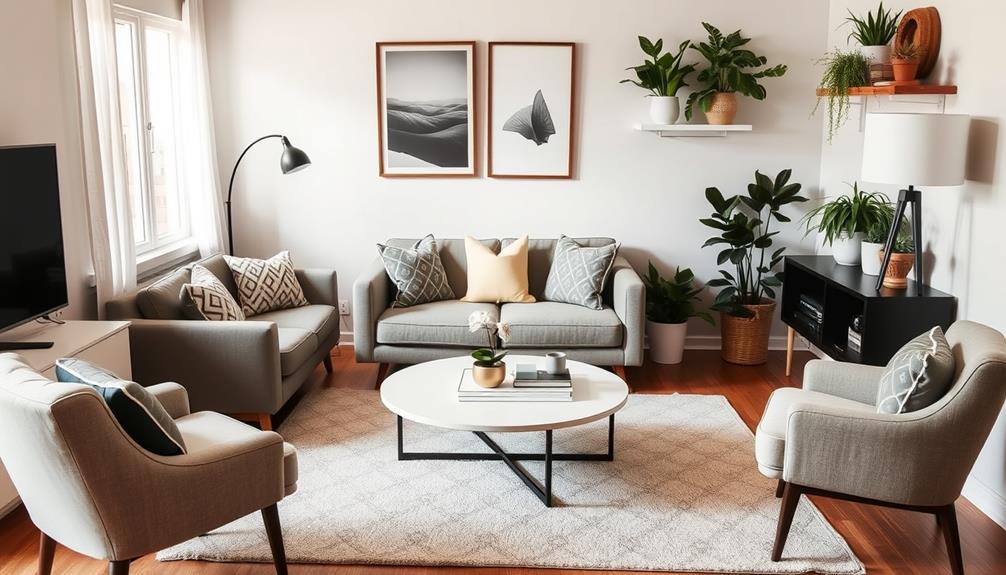
In small living rooms, the way you place your furniture can considerably impact the space's functionality and feel. Start by pulling furniture away from the walls to create a central gathering area. This promotes intimacy and improves social interactions. Make sure to designate clear traffic paths—aim for at least three feet behind sofas and chairs for smooth movement.
Using armchairs strategically can help define cozy conversation spaces without overwhelming the area with larger pieces. Opt for lighter, smaller-scale furniture, such as two armchairs instead of a bulky sofa, to maximize the illusion of more space. Arrange your furniture to face a focal point like a TV or fireplace, which enhances functionality and encourages a cohesive layout.
Here's a quick table to visualize some effective furniture placement strategies:
| Furniture Type | Placement Tips | Benefits |
|---|---|---|
| Sofas | Float in the center | Promotes conversation |
| Armchairs | Position in pairs or angles | Defines cozy nooks |
| Coffee Tables | Keep close to seating | Enhances accessibility |
| Side Tables | Place beside seating for utility | Makes the area feel organized |
| Rugs | Use to anchor the seating area | Creates visual boundaries |
Choose Multi-Functional Pieces
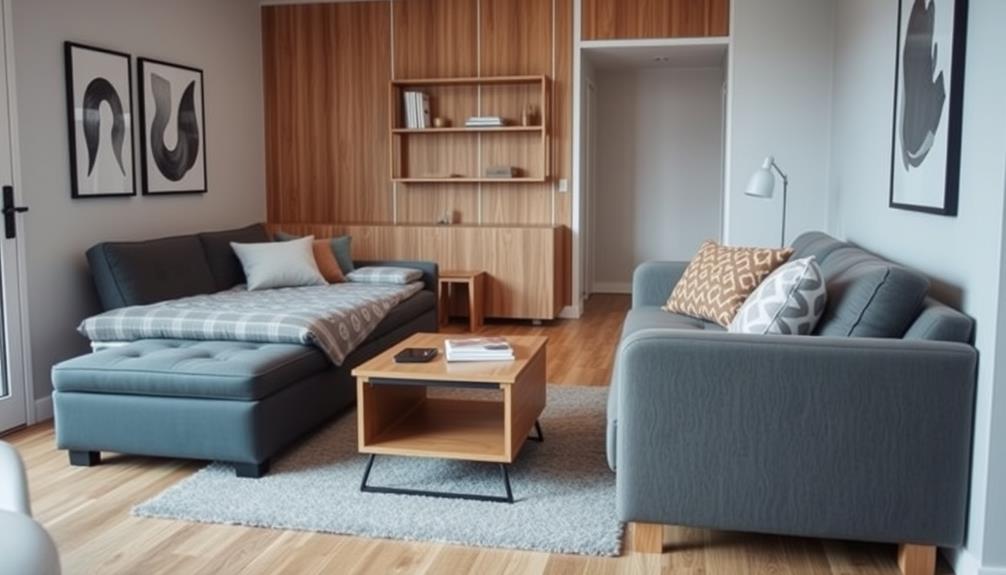
Maximizing your living room's potential often hinges on choosing multi-functional pieces that serve more than one purpose. Opt for multi-functional furniture like ottomans that double as storage and extra seating, helping you keep clutter at bay while providing a cozy spot for guests.
Additionally, consider incorporating energy-efficient options to enhance both comfort and functionality, such as heated mattress pads for a cozy atmosphere during cooler months. Sofa beds or futons are fantastic for small spaces, offering flexible seating during the day and transforming into comfortable sleeping areas at night when you have visitors.
Consider coffee tables with hidden compartments or lift-tops, perfect for storing blankets and magazines. This way, you can keep your surfaces clear and organized without sacrificing style.
Nesting tables are another great option; they save space when not in use and provide additional surface area when entertaining.
Don't forget about armchairs that can be easily moved or folded away. This adaptability lets you change your seating arrangements based on the occasion or need, ensuring your small living room feels spacious and functional.
Utilize Vertical Space
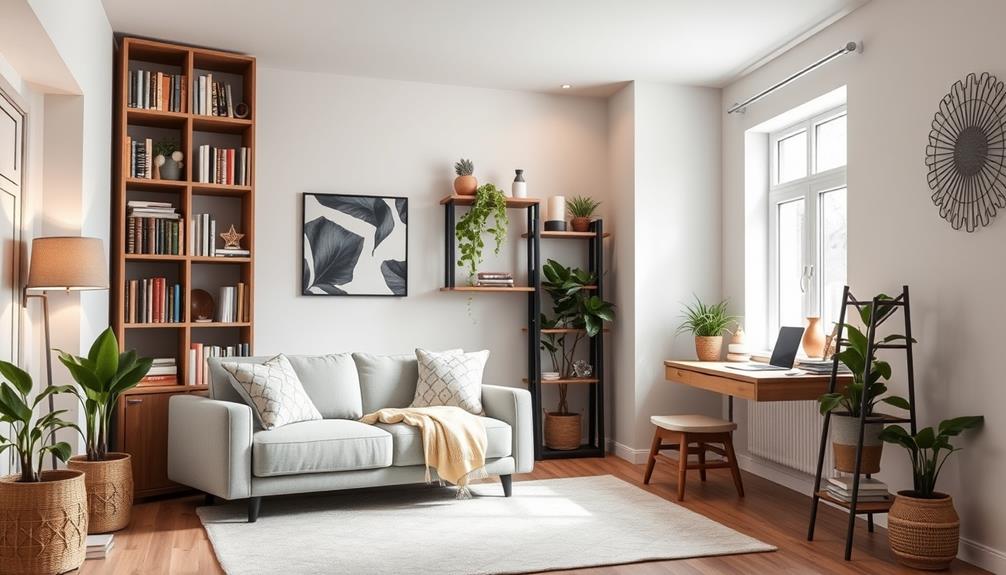
To maximize your small living space, consider installing wall-mounted shelving solutions that draw the eye upward, similar to how DIY Fire Pit Ideas enhance outdoor areas.
Tall furniture options can also create an illusion of height, making your room feel more open and spacious.
Wall-Mounted Shelving Solutions
Utilizing wall-mounted shelving solutions can transform your small living room by maximizing vertical space. These shelves allow you to store and display items without eating up valuable floor area, which is essential in compact settings.
By installing shelves at varying heights, you can draw the eye upward, creating an illusion of greater height and spaciousness. Open shelving is particularly effective in maintaining a lighter visual weight, steering clear of the bulky look often associated with traditional cabinets.
This approach contributes to an open and airy feel in your living room. You can use wall-mounted shelves for multiple functions: display your favorite decor, hold books, or even support plants, enhancing both functionality and aesthetics.
Consider incorporating modular wall shelving systems for added versatility. These allow you to customize and adapt your layout as your needs and style preferences evolve.
Whether you want to showcase a curated collection or simply keep your living space organized, wall-mounted shelving solutions are an excellent choice for optimizing vertical space and adding character to your small living room.
Tall Furniture Options
In a small living room, tall furniture options can make a significant difference in how the space feels and functions. By incorporating tall bookcases, you can draw the eye upward, creating an illusion of height while providing essential storage for books and decor. This not only maximizes your space but also adds visual interest.
Consider choosing tall, slender furniture pieces like narrow cabinets or side tables. These options help maintain an open feel while maximizing vertical storage solutions.
Wall-mounted shelves can further enhance your organization, allowing for decorative displays and keeping surfaces clear, so your room feels less cluttered.
Don't forget about the benefits of using tall cabinets or pegboards, which can enhance accessibility without sacrificing precious floor space.
Additionally, hanging plants or wall planters introduce greenery and vibrancy without taking up any room on the floor.
Create Distinct Zones
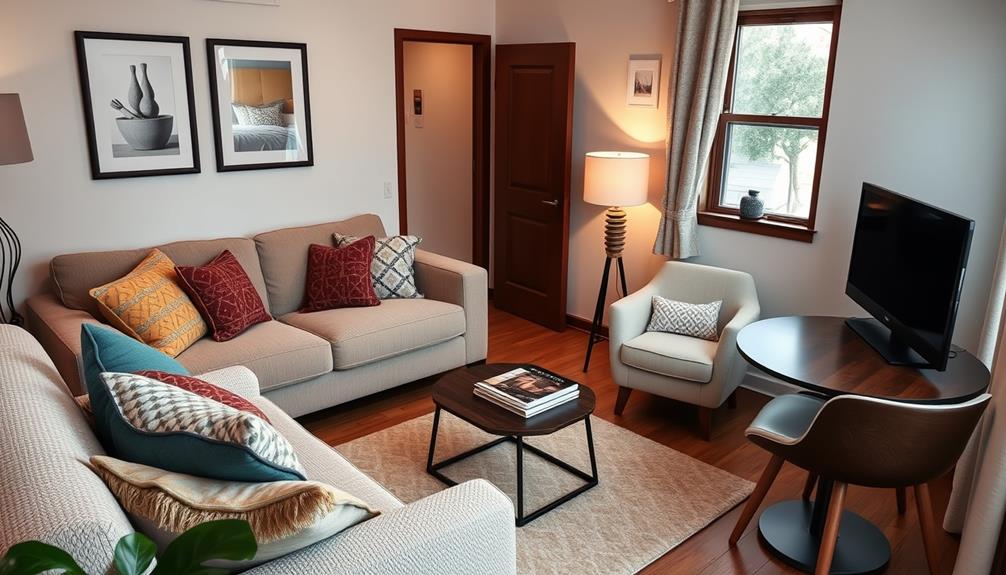
Creating distinct zones in a small living room can transform how you use the space. By defining specific areas, you can enhance functionality while keeping the room feeling open.
Here are three effective strategies to achieve this:
- Use Area Rugs: Place area rugs to visually separate different functional zones, like a cozy conversation area from a workspace. Rugs help to anchor each zone and make it feel intentional.
- Strategic Furniture Placement: Position your furniture pieces thoughtfully. For instance, place a sofa facing a pair of armchairs to create an inviting conversation nook. This arrangement encourages interaction and maximizes seating without overcrowding.
- Incorporate Dividers: Utilize bookcases or screens as physical dividers between zones. They maintain an open feel while providing a sense of privacy, allowing you to enjoy distinct activities without feeling disconnected.
As you define these zones, guarantee pathways remain clear and unobstructed. This allows for smooth traffic flow and easy access to each area, enhancing the overall functionality of your small living room.
Incorporate Light Colors
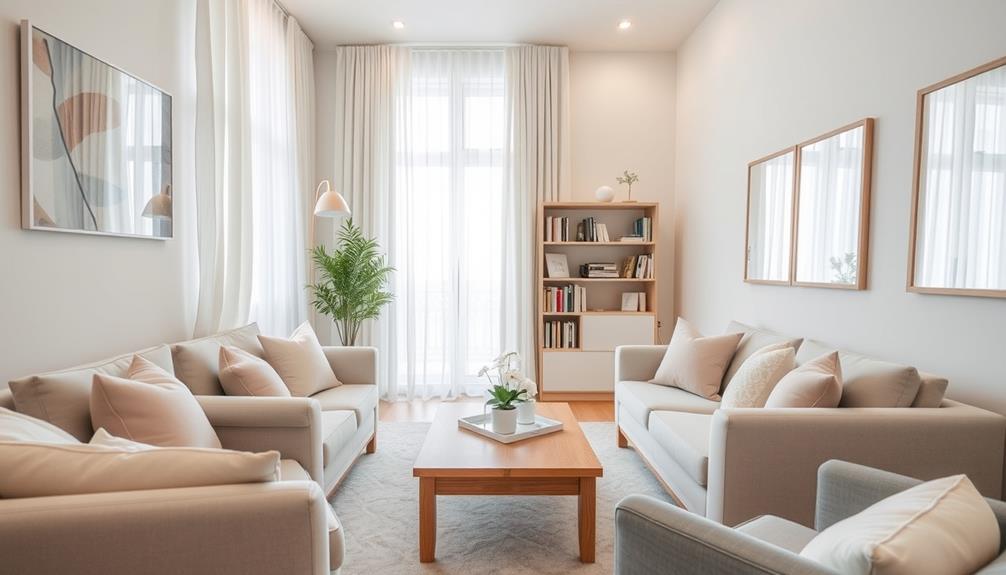
After establishing distinct zones in your small living room, incorporating light colors can further enhance the space's openness and airiness. Light colors, like whites, creams, and pastels, reflect natural light instead of absorbing it, making the room appear larger.
Opt for a monochromatic color palette with varying shades of light colors to create a cohesive look that enhances the perception of space.
When you choose light-colored furniture or upholstery, you help maintain that airy feel. These tones visually expand your small space, especially when paired with lighter wall colors.
Consider matching the trim and furniture to create a harmonious environment that minimizes visual clutter, contributing to a more spacious atmosphere.
You can also add subtle pops of color through decorative items, such as cushions or artwork, to add dimension without overwhelming the openness created by the lighter shades.
Maximize Natural Light
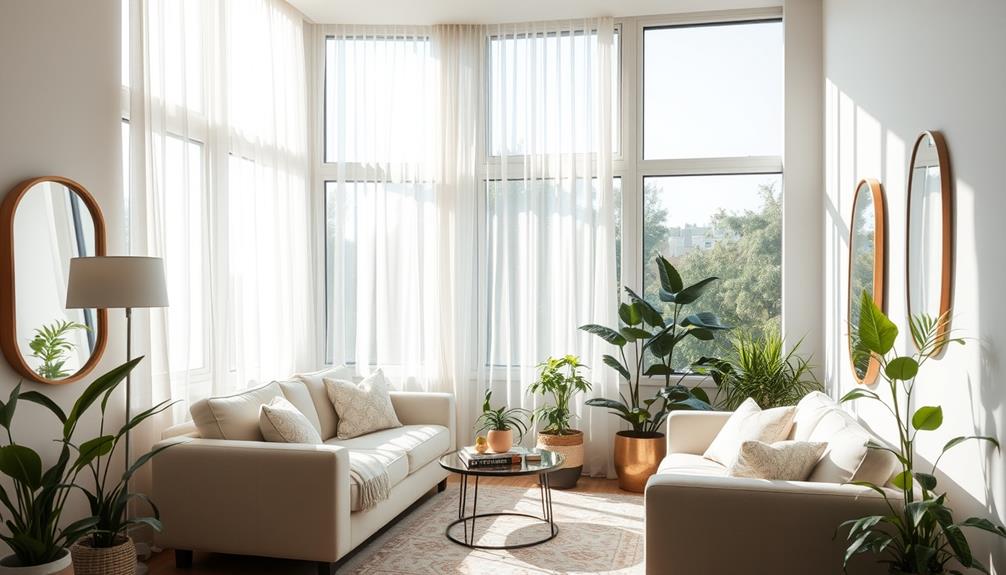
Maximizing natural light is essential for making a small living room feel more spacious and inviting. To achieve this, consider these three effective strategies:
- Position Furniture Wisely: Place your furniture near windows to guarantee maximum exposure to natural light. This not only enhances the airy feel but also creates an open space that looks larger.
- Use Sheer Window Treatments: Opt for sheer or light-colored window treatments that filter and reflect light. These will prevent your room from feeling closed off or dark, allowing sunlight to brighten the space.
- Incorporate Mirrors: Arrange mirrors opposite windows to reflect natural light, which creates an illusion of depth. This simple addition can instantly make your living room appear larger and more inviting.
Additionally, choose light-colored or transparent furniture to maintain openness.
Keep pathways clear and avoid placing heavy items in front of windows to guarantee unobstructed light entry.
Frequently Asked Questions
How to Fit Furniture in a Small Living Room?
To fit furniture in a small living room, choose multi-functional pieces, arrange them centrally, and use area rugs to define zones. Light colors and vertical storage create an open, airy feel while maximizing your space.
How Do You Arrange Furniture in a Tight Space?
When you arrange furniture in a tight space, pull pieces away from walls to create a central area. Use multi-functional items, choose smaller furniture, and group pieces for conversation, enhancing both flow and intimacy.
How to Furnish a Small Living Room Cheaply?
To furnish your small living room cheaply, look for multi-functional furniture, shop thrift stores, and consider DIY projects. Light colors and minimal decor can enhance your space without breaking the bank. Area rugs help define areas nicely.
How to Layout Furniture in a Living Room?
Did you know that arranging furniture can increase a room's perceived space by up to 20%? Start by creating zones, focusing on a central point, and using versatile pieces to enhance functionality and comfort.
Conclusion
By thoughtfully arranging your living room furniture, you can transform a small space into a cozy retreat. Picture your room as a canvas, where every piece of furniture plays an essential role in the masterpiece of your home. Embrace multi-functional items and let light colors dance on the walls, creating an illusion of openness. With a little creativity and intention, you'll cultivate a harmonious oasis that invites comfort and connection, making every moment spent there feel like a warm embrace.
